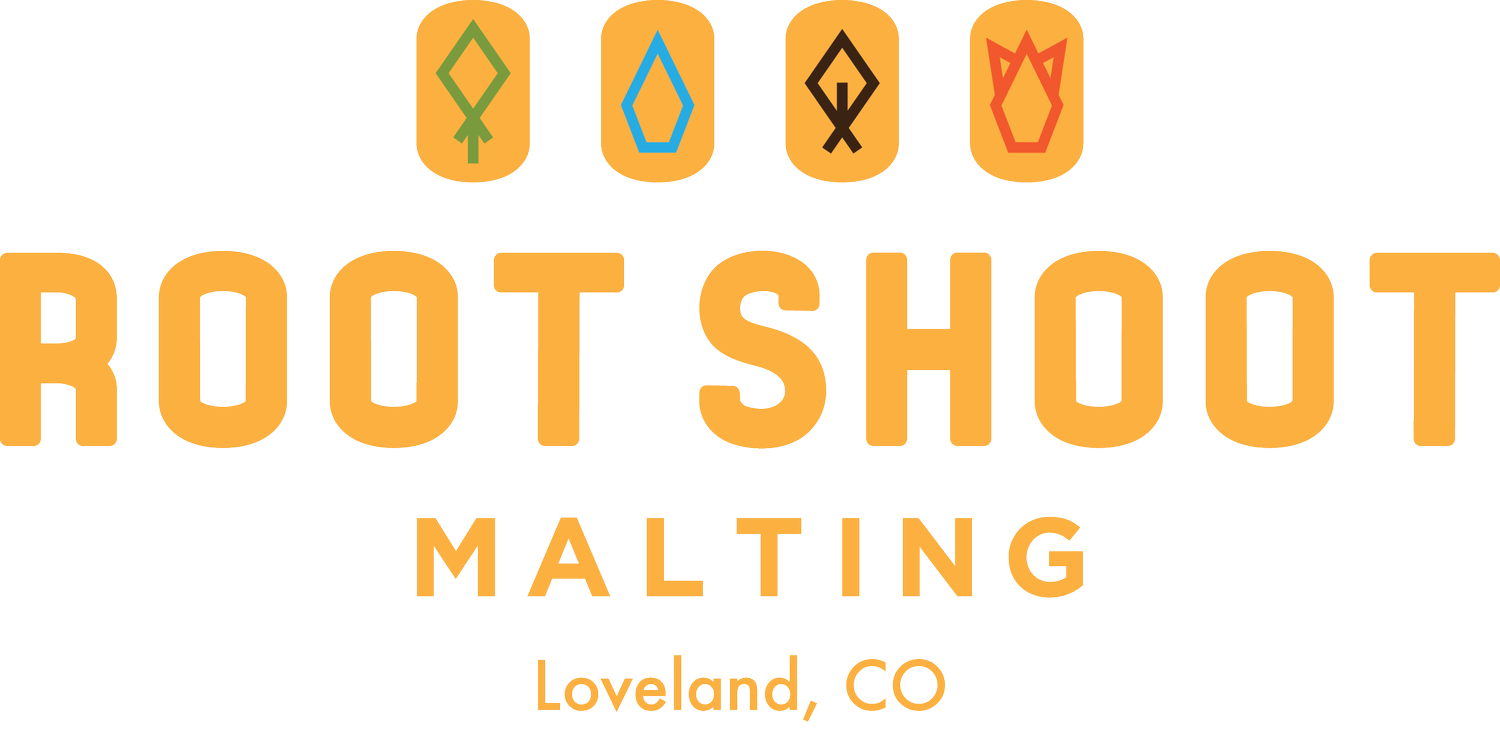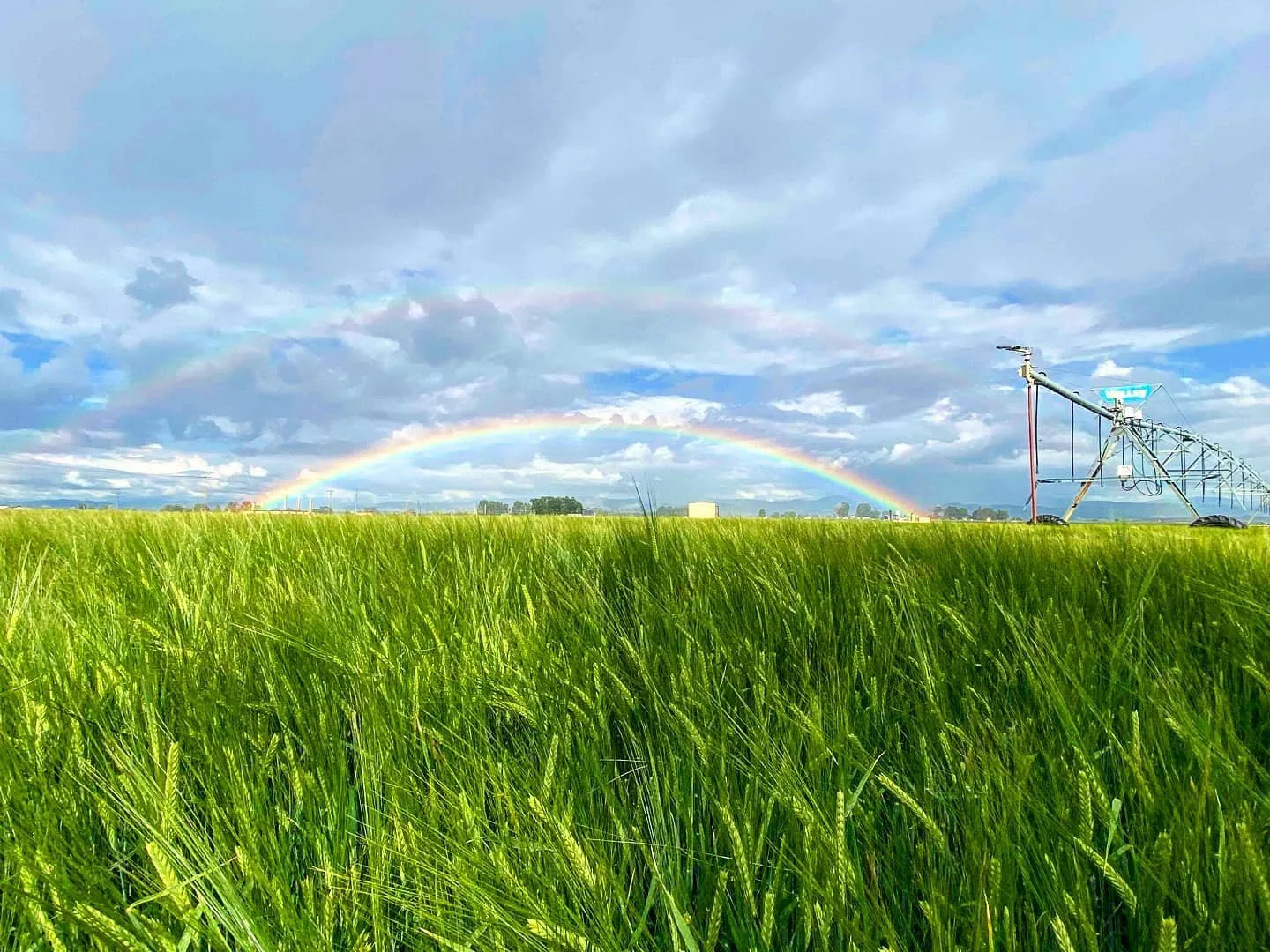And just like that, winter is over.
A barley plant. Photo by Emily Taylor Photography.
Well, technically, it’s not over quite yet. We have a few more weeks until the March equinox, which marks the “official” end of winter. And anyone who’s lived in Colorado for any amount of time know that winter never actually ends in March. In fact, often Father Winter is just biding his time until March, waiting for the birds to sing, the sun to warm a little bit, and folks to get excited about getting outside and then BLAMMO, a foot of snow dropped right before a Monday morning commute and on the first day of your kids’ spring break. He’s mean like that, Father Winter. But we don’t mind him all that much. We rely on those winter/spring snows for moisture for both our fall-planted crops, and our early-spring planted crops - like barley.
No barley, no beer, so every March first we dust off the tractors, roll out the seed drill, and get planting.
And we are planting a lot of barley this year.
2021 was marked by a drastic decline in barley production resulting in shortage conditions and a rising concern on the part of malthouses and breweries who depend on the crop for their livelihood. Some of the decline was due to drought, some of it to farmers choosing not to plant barley (for a wide variety of reasons) but overall the harvest was down 270,000 acres nationally, or 40%.
Forty percent! That’s a lot! Imagine if your salary dropped by 40%. Or worse, yet, imagine if you were told that your beer consumption had to drop by 40% because there was so little malt.
That would make weekends very boring, indeed.
Barley fields.
As a malthouse, we are lucky that we are also a farm. It insulates us to some degree from these types of market fluctuations. We grow all our own barley, so if we come up short one year, that’s largely on us (or on Mother Nature’s propensity for hail damage.) We had a great barely harvest last year, and this year we are stepping up our game. Big time. Like, doubling our game. Last year, we planted 500 acres of barely. This year, we’re upping that to 980. Figuring a 100-bushel harvest per acre, we’re hoping for 98,000 bushel of barley, which is roughly 2,130 tons of barley, which, doing the math, comes out to approximately a Whole Lot of Beer.
For us (and hopefully for you beer drinkers, too) this is a real-life example of the benefits of “keeping it local.” Using the local farmland to produce barley for the malthouse down the road that then sells to breweries in your neighborhood, creates a supply chain that is harder to upset than one dependent on shipping barley in from the midwest or even from big, overseas producers of malt. By being able to plan for and produce our own crop, we’ve also been able to shield our business from some of the skyrocketing prices. It’s true that some of our input costs have gone up, fuel, fertilizer, and seed most notably, but as the farmers, we have the ability to adjust both our practices and our annual plan to try and mitigate those costs increases: something we couldn’t do if we were just purchasing barley. The slow shift to regenerative agriculture that we have been doing plays into this plan as well: healthier soil produces healthier crops with less inputs.
See how it all ties together? How everything’s related?
Thompson the Farm Dog on quality control.
All the heady, big-picture thinking aside, we get excited for springtime just like everyone else, so this month we’ll be babbling on about barley on the farm. Do you know what the difference between 2-row and 6-row barley is? How about the quality specifications required of malting barley? Or why it can be so dang hard to meet those quality specifications some years? Or what a seed drill is and why we choose to plant with it?
Follow the hashtag #maltmadness on our social media accounts (FB, Insta, and Twitter!) to follow along.
And this month, as you’re cruising along the highway, wave to Todd on his tractor! He’s busy planting your future beer. Actually, wave even if it’s not Todd. Farmers like waves (polite waves, not the one-finger salute, heaven forbid) and then go buy yourself a beer. Make sure it’s local. It’s an easy way to give back to the farmers who give so much.
Wishing you a Very Merry Month of Malt Madness!
—Olander Farms







